Cats have unique eyes that require special care to maintain their feline vision health. Just like humans, cats can experience eye problems and diseases that can affect their overall well-being. By understanding the importance of cat eye care and implementing proper preventive measures, pet owners can ensure their furry friends maintain optimal eye health throughout their lives.
Pet eye care tips encompass various aspects of feline eye health, including nutrition, grooming, and regular veterinary check-ups. By following these essential cat eye care guidelines, you can help promote healthy vision in your beloved kitty and catch any potential eye issues early on.
Key Takeaways:
- Proper cat eye care is essential for maintaining feline vision health and overall well-being.
- Regular veterinary check-ups ensure early detection and treatment of cat eye diseases and problems.
- A high-quality, high-protein diet is crucial for cat eye health, with nutrients like taurine and healthy fats playing a significant role.
- Regular cleaning and grooming routines help prevent and detect any abnormalities or signs of eye injury or disease.
- Knowing breed-specific considerations can help pet owners address potential hereditary eye issues in their cats.
How Cats’ Eyes Function
Cats have remarkable eyesight that enables them to be skilled hunters. Their eyes, larger in proportion to their skull, provide them with a wider field of view compared to humans. This wider field of vision allows cats to judge distance accurately, a crucial skill for hunting prey.
Cats possess the ability to see in low light conditions due to a specialized layer of cells called the tapetum lucidum. This layer reflects light and effectively amplifies dim light, enhancing their vision. Thanks to their elliptical-shaped pupils, cats can control the amount of light entering their eyes, allowing them to adapt to varying lighting conditions.
While cats do not perceive colors the way humans do, their basic mechanism of vision is similar. The color vision of cats is not as vibrant as humans, but they compensate with their exceptional ability to detect motion and perceive objects in low light environments.
Nutrition for Cat Eye Health
Proper nutrition plays a crucial role in maintaining the health of your cat’s eyes. A high-quality, high-protein diet is essential for cat eye health. Protein provides the building blocks for various tissues, including the photosensitive parts of the eyes. One important amino acid found in protein is taurine, which is vital for optimal eye function in cats.
When selecting cat food, prioritize options that contain high-quality sources of protein. Look for labels that specify the type of protein, such as chicken, turkey, or fish. This helps ensure that your cat is getting the necessary nutrients for their eyes.
In addition to protein, healthy fats are also beneficial for cat eye health. Fish oil, rich in omega-3 fatty acids, can provide essential nutrients that support overall eye health. Omega-3 fatty acids have anti-inflammatory properties and promote healthy circulation to the eyes.
Supplements like full-spectrum CBD oil or hemp oil can potentially offer additional benefits for maintaining normal eye function and supporting healthy vision in cats. However, before introducing any supplements into your cat’s diet, it is crucial to consult with your veterinarian. They can provide guidance on the appropriate dosage and address any concerns you may have.
Remember, a well-balanced diet that includes high-quality protein, healthy fats, and potentially beneficial supplements can contribute to the overall eye health of your feline friend. Providing proper nutrition is an essential part of caring for your cat’s eyes and ensuring they enjoy healthy vision for years to come.
Cleaning and Grooming for Cat Eye Health
Regular eye cleaning and grooming are essential for maintaining your cat’s eye health. By incorporating these practices into your cat’s routine, you can help prevent eye problems and detect any issues early on.
DIY Eye Examination
Conducting a DIY eye exam at home can provide valuable insights into your cat’s eye health. Look for any signs of redness, discharge, excessive tearing, or changes in eye color. If you notice any abnormalities, it’s crucial to consult with your veterinarian for a proper diagnosis.
Gentle Eye Cleaning
To keep your cat’s eyes clean, gently wipe away any debris or crusty bits that may accumulate in the corner of their eyes. Use a clean, damp cloth or a sterile saline solution specifically formulated for eye cleaning in cats. Avoid using any harsh chemicals or irritants that could harm your cat’s sensitive eyes.
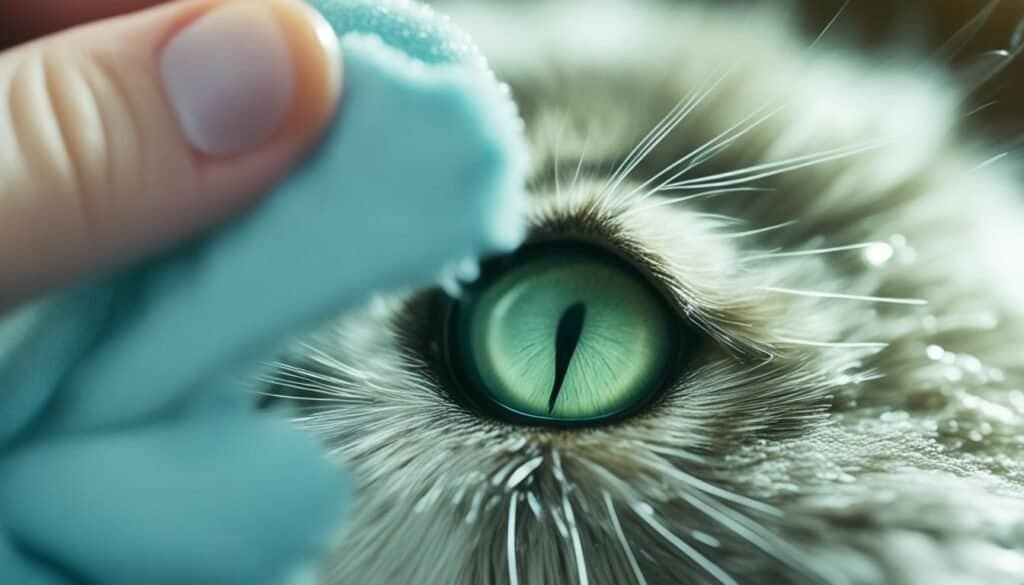
Trimming Long Hair
Long hair around your cat’s eyes can obstruct their vision and increase the risk of eye irritation or injury. Regularly trim and groom the fur around their eyes to prevent any problems. If you’re unsure about how to safely trim your cat’s hair, consult with a professional groomer for assistance.
Regular Veterinary Exams
Regular visits to the veterinarian are crucial for maintaining your cat’s eye health. During these exams, the vet will conduct a thorough examination of your cat’s eyes, looking for any signs of disease or injury. Additionally, they may perform specific tests to evaluate your cat’s eye health, such as measuring intraocular pressure to detect conditions like glaucoma.
Signs of Eye Injury or Disease
It’s essential to be vigilant and aware of common signs of eye injury or disease. If you notice any discharge, excessive tearing, squinting, pawing at the eyes, or a visible third eyelid, it may indicate a problem that requires immediate veterinary attention. Prompt diagnosis and treatment can help prevent further complications and protect your cat’s vision.
By incorporating regular eye cleaning and grooming into your cat’s routine, along with regular veterinary exams and prompt attention to any signs of eye injury or disease, you can help ensure your feline friend maintains optimal eye health.
Common Eye Disorders in Dogs and Cats
Both dogs and cats can experience a variety of eye disorders that can affect their vision and overall well-being. It is important for pet owners to be aware of these conditions and seek appropriate treatment when necessary. Some common eye disorders in pets include:
- Conjunctivitis: Also known as “pink eye,” conjunctivitis is the inflammation of the conjunctiva, the thin membrane that covers the white part of the eye and the inner surface of the eyelids. It can cause redness, discharge, and discomfort.
- Glaucoma: Glaucoma is a condition characterized by increased pressure within the eye, which can lead to optic nerve damage and vision loss if left untreated. Symptoms include redness, pain, cloudiness, and enlargement of the eye.
- Cherry Eye: Cherry eye is a condition where the tear gland in a dog or cat’s third eyelid protrudes and becomes visible. It can cause redness, swelling, and irritation.
- Cataracts: Cataracts are a clouding of the lens in the eye, leading to blurry or impaired vision. They are more common in older animals but can also occur in younger pets due to genetic factors or underlying health conditions.
- Corneal Ulcers: Corneal ulcers are open sores on the cornea, the clear outer layer of the eye. They can be caused by trauma, bacterial or viral infections, or underlying eye conditions. Symptoms include redness, squinting, excessive tearing, and eye pain.
- Uveitis: Uveitis is inflammation of the uvea, which includes the iris, ciliary body, and choroid. It can be caused by infections, autoimmune diseases, or trauma. Uveitis can cause symptoms such as redness, cloudiness, sensitivity to light, and decreased vision.
- Trauma: Eye trauma can result from accidents, scratches, or foreign objects entering the eye. It can cause a range of symptoms depending on the severity of the injury, including redness, swelling, discharge, and pain.
These eye disorders in pets should not be ignored as they can lead to long-term complications and affect the quality of life for your furry friends. If you notice any signs or symptoms of eye disorders in your dog or cat, it is important to consult with a veterinarian for a proper diagnosis and treatment plan.
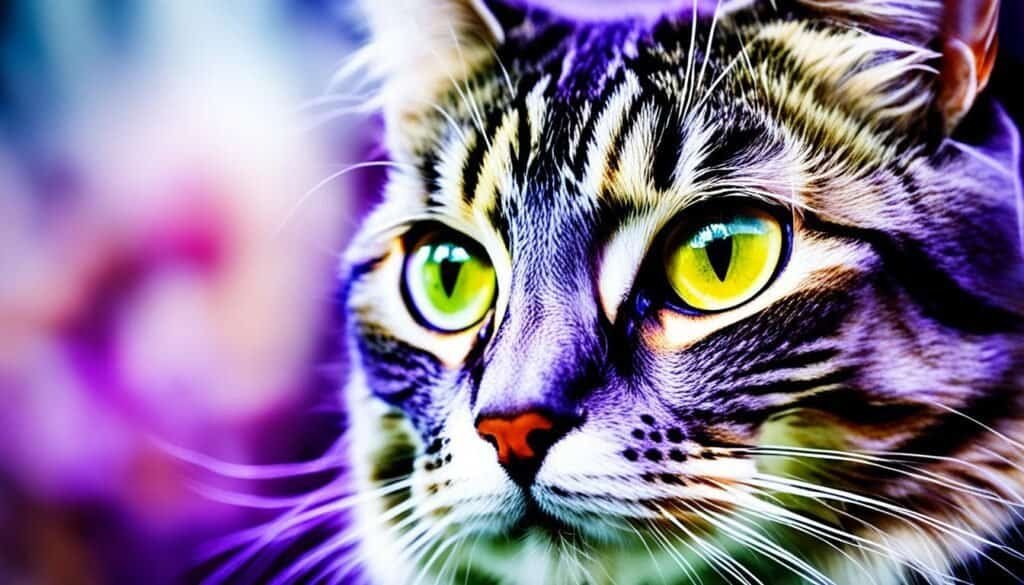
Breed-Specific Considerations for Eye Health
When it comes to eye health, some pets are more susceptible to hereditary eye issues based on their breed. Understanding these breed predispositions can help pet owners be more vigilant in monitoring and caring for their pets’ eyes.
For example, certain breeds have a higher risk of developing glaucoma, a condition characterized by increased pressure within the eye. Jack and Parson Russell Terriers are among the breeds more prone to this condition. Regular eye exams and early detection are key to managing glaucoma and preventing vision loss.
Another breed-specific concern involves corneal exposure in flat-faced breeds like pugs and bulldogs. Due to their facial structure, these breeds may experience difficulty fully closing their eyes, leading to corneal exposure. This can result in dryness, inflammation, and potential damage to the cornea. Pet owners should regularly check their pet’s eyes for any signs of corneal exposure and seek veterinary care if needed.
Persian cats, known for their luxurious coats and expressive eyes, are genetically predisposed to tear duct issues. Blocked tear ducts can cause tear overflow, eye discharge, and increased risk of eye infections. Regular grooming and diligent eye care can help manage tear duct issues in Persian cats.
By being aware of breed-specific considerations, pet owners can take proactive steps to protect their pets’ eye health. Regular veterinary check-ups and prompt attention to any changes or abnormalities in their pets’ eyes can make a significant difference in maintaining optimal eye health.
Conclusion
Maintaining proper eye care for cats is crucial for their overall health and well-being. As pet owners, it’s essential to understand how a cat’s eyes function and provide them with a nutritious diet to support their eye health. Regular cleaning and grooming help prevent eye issues, and being aware of signs of injury or disease allows for prompt treatment.
Additionally, regular veterinary exams are vital for ensuring optimal eye health in cats. A veterinarian can detect any underlying conditions or breed-specific considerations that may affect a cat’s vision. By prioritizing regular care and attention, cat owners can help their feline friends enjoy a lifetime of healthy vision.
Remember, the eyes are the window to a cat’s well-being and should not be neglected. With proper care and attention, you can contribute to your cat’s overall eye health and maintain their vision for years to come.
FAQ
Why is cat eye care important?
How do cats’ eyes function?
What should cats eat for good eye health?
How should I clean and groom my cat’s eyes?
What are some common eye disorders in dogs and cats?
Are there breed-specific considerations for eye health?
What is the importance of regular cat eye care?
Last modified: February 25, 2024

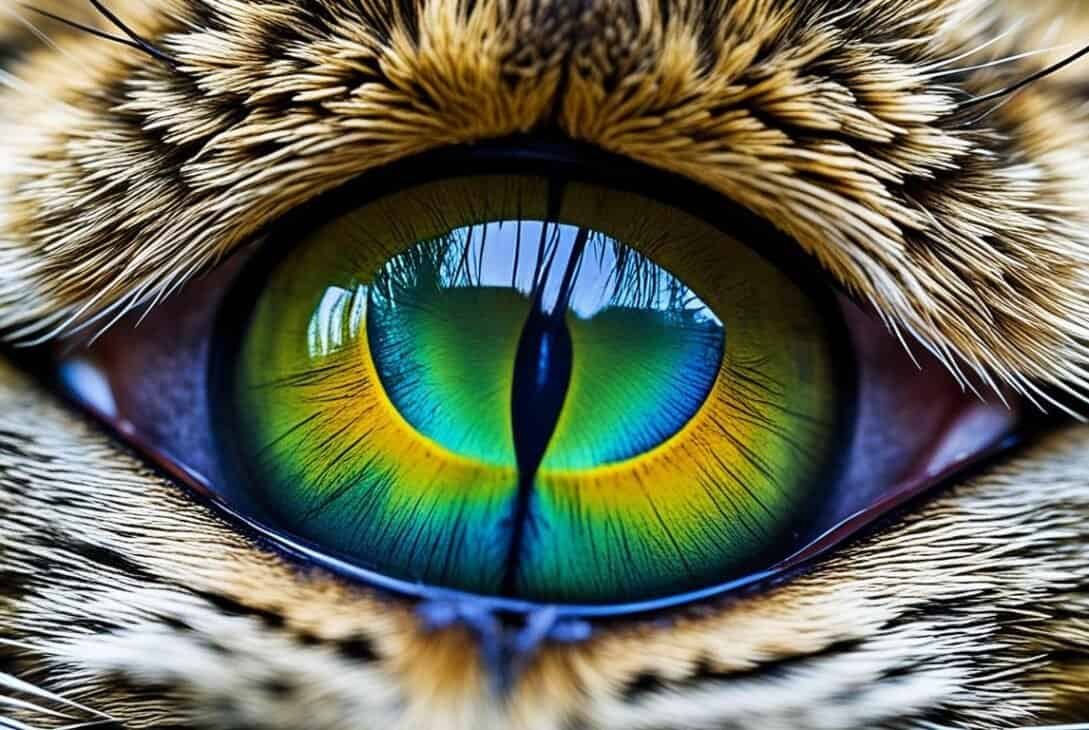

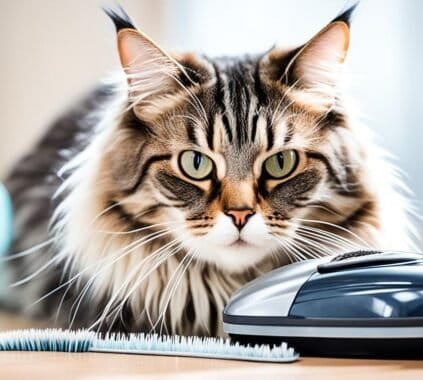
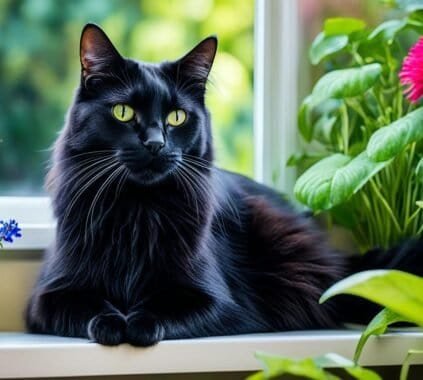
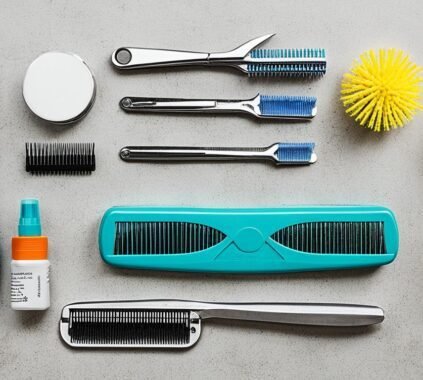

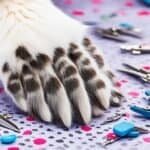






[…] this comprehensive guide, we will provide you with essential tips for washing your cat and making the process as stress-free as possible. From preparing the right supplies to rewarding […]
[…] To keep your cat’s skin healthy and free from problems, follow these cat skin care tips: […]
[…] cleaning your cat’s ears is essential for their overall ear health. Here’s a step-by-step guide on how to clean your cat’s […]
[…] the right cat food is essential to provide your feline companion with the necessary nutrients to thrive. Whether you opt for wet […]
[…] including diabetes, joint pain, and reduced lifespan. Regular exercise and portion control are essential to help your cat maintain a healthy […]